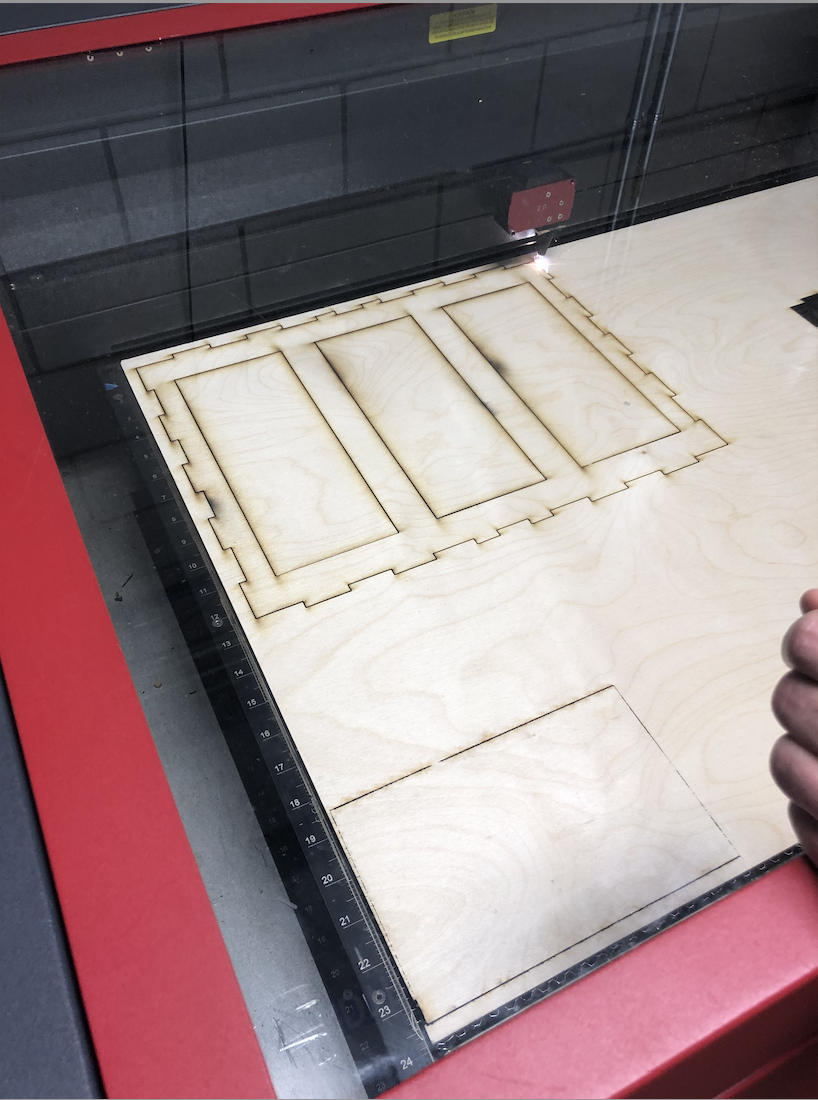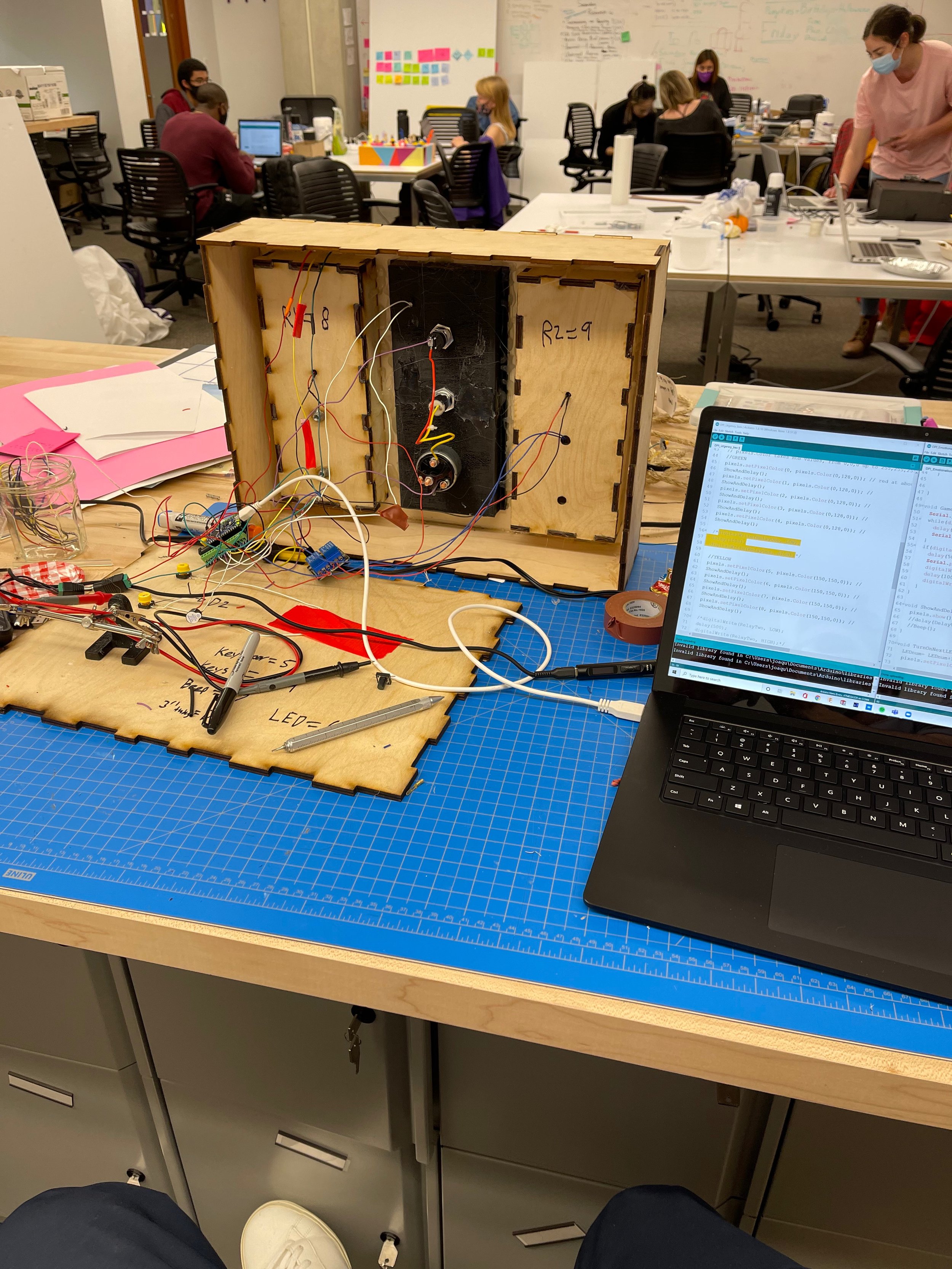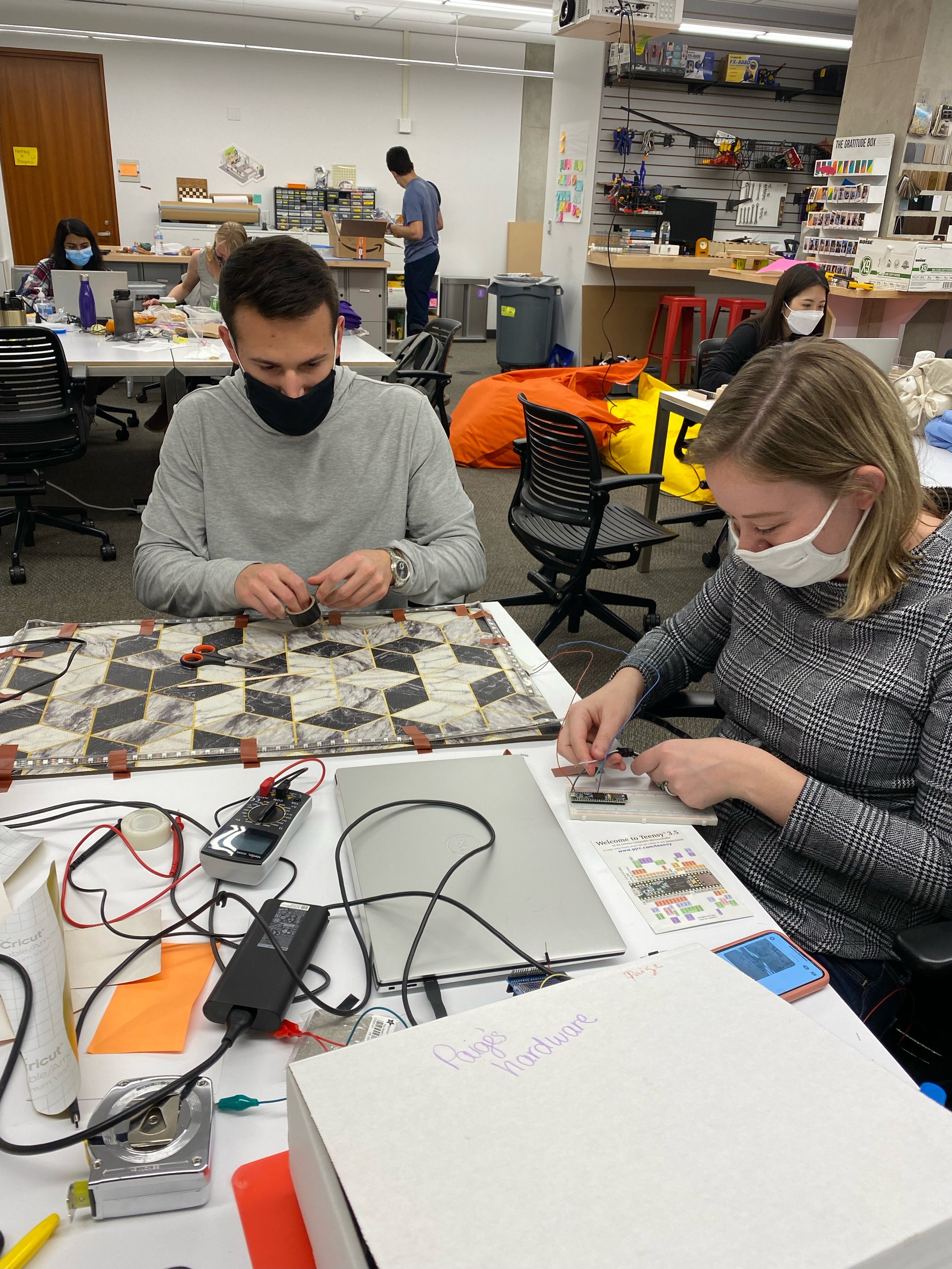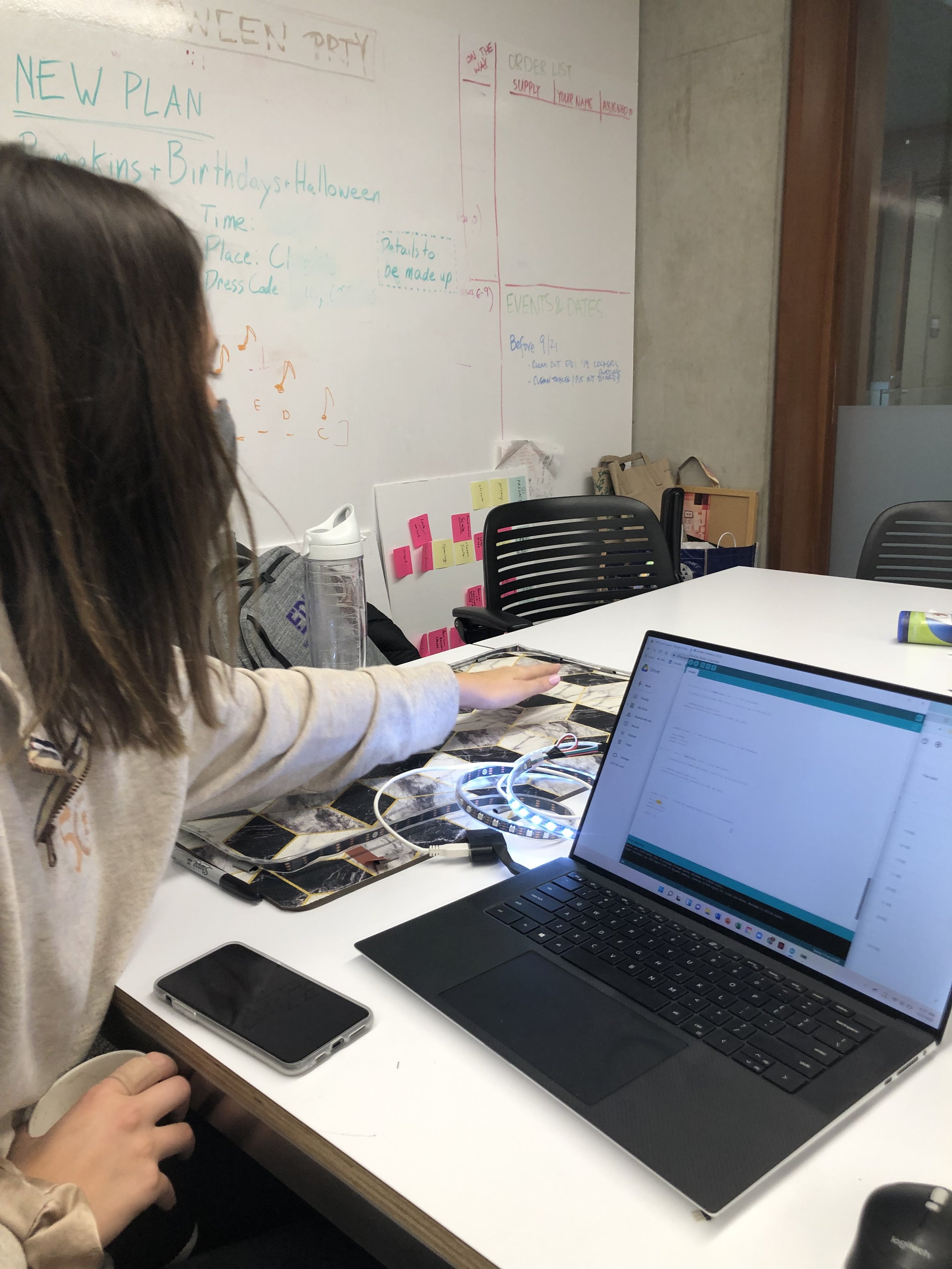
How might we rethink existing interactions to solve human needs through integrated experiences?
Projects: Emotional Box (Urgency), Activated Doormat, and Future of Bathroom Stall Doors
Deliverables: Prototypes (interactive, functioning), Process documentation (PowerPoint, Word, images, and videos)
Software Applications: PowerPoint, Word, Arduino, Mural
Skills Used: Iterative Prototyping, Human-centered Design, Mechatronics, Concept Sketching
Class Background
Designing Product Interactions (DPI) is a course offered by Segal Design Institute at Northwestern University. The course is taught by Craig Sampson who founded and directed the IDEO Chicago office for 16 years. DPI focuses on understanding design across industries and products such as consumer products, music/sound, psychology, haptics, augmented/virtual reality, and more. For every course assignment and project, we focused on the DPI framework on the right. This course was a phenomenal experience in understanding how people interact with physical products and human-centered design.
Emotional Box (Urgency)
Ask: Each team designed and built an interactive box, 16” x 12” x 4”, with the top surface serving as a lid, attached along the rear edge. While the functional interaction is the same for all teams, each team had the interaction design goal to elicit a particular emotion in the user when they open the box. This was not about what was in the box, but about the properties of the box and the experience of opening it.
My group’s emotion was urgency. We created a three-part timed, gamified, and problem-solving experience.
Activated Doormat
Ask: The goal of the final demo for this course was to bring together and apply the principles discussed in this course in a provocative and illustrative manner. The demo was an illustrative bilateral (you interact with it and it interacts with you), multi-sensory, human-product interaction. You should illustrate your understanding of established human routines and emotional experiences. The demo had to span across the physical and digital worlds.
My group focused on how to evolve the everyday routine of stepping on a doormat. Hypothetically, the activated doormat would be a part of a person’s smart home in order to lock/unlock a door, turn lights on/off, and more. Our prototype focuses on the experience of how an activated doormat can unlock/lock a front door as the user enters/exits.
Future of Bathroom Stall Doors
Ask: Using insights into human needs and knowledge of available technologies, we had to create a new door concept that is useful and compelling – even inspiring. The solutions needed to demonstrate an understanding of a range of human senses, perceptions, preconceptions, and actions.
After understanding the history of bathroom stall doors and current interaction experiences, we developed a hands-free, manual, and accordion-style door. The door can be closed, locked, and opened with the user’s forearm or elbow without taking away space in the stall like current bathroom stall doors.













